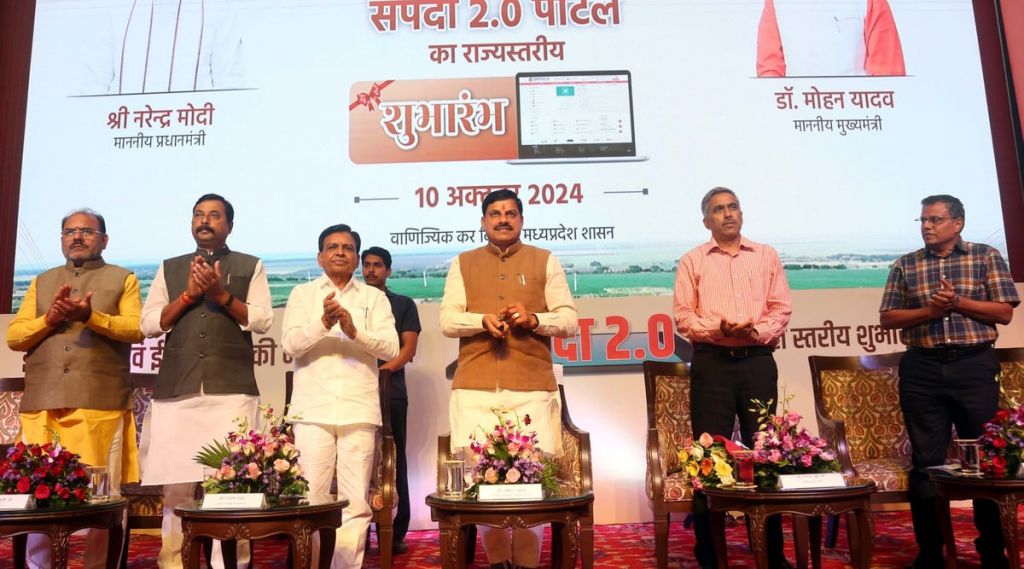
By Sanjay Dubey, Additional Chief Secretary, Department of Science and Technology, Government of Madhya Pradesh
India's 154th rank among 190 countries in the World Bank's 20191 "Registering Property" parameter reflects the challenges citizens face in property registration. However, Madhya Pradesh has led the way in reform, earning "Achiever" status in the World Bank and DPIIT’s BRAP 20222 rankings. The state implemented over 350 reforms to streamline land administration, tax filing, inspections, and construction permits. Ranking 4th in Ease of Doing Business in 20193, Madhya Pradesh excelled in property registration, business startups, and contract enforcement. Despite these strides, property registration challenges persist, underscoring the need for further reforms.
Challenges in Property Registration
Across India, property registration is often time-consuming and complex. Accurate property valuation, verifying geographical location, and updating ownership changes require extensive physical checks, leading to a dependency on intermediaries, which increases fraud risks and prolongs timelines. Adding to the complexity, services like water and property tax registration often require citizens to visit additional offices to create property IDs, making property registration a lengthy and exhausting multi-step process. The environment at sub-registrar offices, with limited appointment slots, the need for witnesses, and physical verifications, transforms what should be a straightforward transaction into an exhaustive ordeal.
These challenges are magnified by a network of stakeholder dependencies. In Madhya Pradesh, property registration relies on coordination between the Inspector General of Registrations and Stamps, the Directorate of Urban Administration and Development (UADD), Panchayat and Rural Development (PNRD), Treasury Department, CLR-Web GIS, and other entities. Tasks like property valuation, land record identification, and financial transaction approvals require information across departments.
Sampada 2.0: A Game-Changer in Digital Property Registration
Madhya Pradesh's Sampada (Stamps and Management of Property and Documents Application) system represents a major leap in digital property registration. Launched in 2024, Sampada 2.0 enables anytime, anywhere registration of property with minimal human intervention. Citizens can choose among three innovative registration approaches:
Office-based Registration, enhancing traditional methods with instant digital delivery.
Remote Registration, allowing secure property registration via video conferencing.
Faceless Registration, a 24/7/365 service for registration without any direct official interaction.
Sampada 2.0 also incorporates Artificial Intelligence (AI) and GIS mapping to ensure accurate property identification, fraud detection, and seamless integration of property records.
GIS technology allows precise mapping and categorization of properties, ensuring legal and spatial accuracy in land records. This platform enables real-time data sharing with other systems, keeping property ownership information up to date across departments and reducing discrepancies. The platform’s video-based KYC feature provides secure Aadhaar-based identity verification for remote registrations. Once registration is completed, citizens receive their documents digitally via WhatsApp and email instantly.
Advanced Integration and Digital Infrastructure
A cornerstone of Sampada 2.0's success is its tight interlinkage with critical databases. The system maintains seamless integration with the Record of Rights (RoR) and property tax register databases of urban local bodies. This integration ensures real-time data synchronization and eliminates the need for multiple department visits. Sampada 2.0 interfaces seamlessly with land records, urban property tax databases, the Registrar of Companies, and GSTN. Payments are processed directly through an integrated cyber treasury, and documents are e-signed, completing a seamless end-to-end digital process. Sampada 2.0 also automatically updates land records to reflect new ownership, reducing delays and errors.
The platform's document management system provides instant access to post-2008 registered documents, while digitization of pre-2008 documents is actively underway. For documents not yet digitized, SAMPADA ensures delivery within three days of online application submission.
SAMPADA 2.0 revolutionizes the user experience through its citizen-centric design. The portal enables self-registration, eliminating the need for professional assistance. Its modular workflow includes comprehensive user guides, detailed FAQs, and instructional videos that walk citizens through each step of the registration process. This approach democratizes property registration, making it accessible to all citizens regardless of their technical expertise.
Cyber Tehsil: Revolutionizing Land Mutation
Complementing Sampada 2.0 is Cyber Tehsil, which addresses land mutation—the critical step of updating ownership records post-sale. Cyber Tehsil digitizes this process, making it faceless, paperless, and online, eliminating the need for manual interventions and tehsil office visits. When a sale is registered through Sampada 2.0, mutation cases are automatically initiated in Cyber Tehsil. Both buyer and seller receive SMS notifications with updates and a link to file any objections. Simple mutations are completed within 15-17 days. With just 10 tehsildars managing over 1,000 mutation courts, Cyber Tehsil processed over 2 lakh cases in 2024 alone, setting a benchmark in public service efficiency.
A Model for Citizen-Centric Digital Governance
These efforts align with the larger vision of enhancing ease of doing business and ease of living in India, positioning Madhya Pradesh as a preferred destination for investments and a model for administrative excellence. Behind this digital transformation is the state’s investment in local talent. The technical team has expanded from 26 to 66 members, creating a strong ecosystem of tech experts, project managers, GIS specialists, and business analysts. This investment in human capital ensures that platforms evolve and improve based on citizen feedback.
Moreover, Sampada 2.0’s scalability, sustainability, and replicability make it a model for other states. Its robust architecture, secure data management, and integration with Aadhaar and PAN-based e-signatures provide a blueprint for nationwide adoption. The "ask once" policy, combined with e-signing capabilities and electronic document delivery, creates a seamless digital experience that saves time and resources.
This initiative has positioned the heart of India as the brain of the nation’s digital revolution—setting new standards and driving social change through technological leadership.